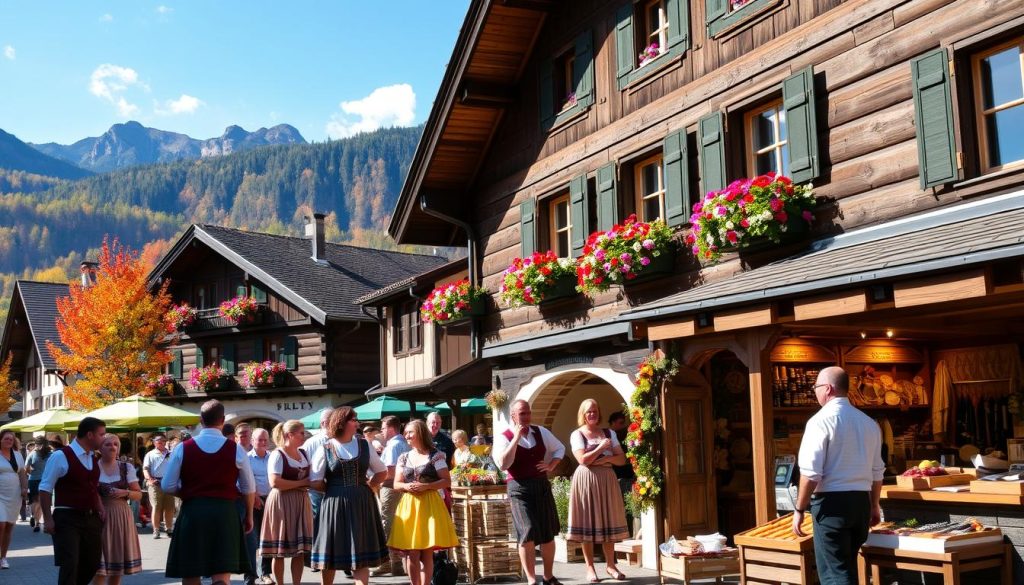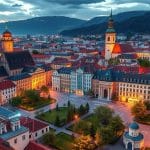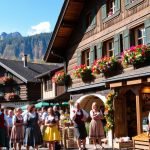Austrian culture is a mix of traditions and customs that show its rich heritage and cultural diversity. It has been shaped by the Habsburg Empire and the lively festivals held across the country. To truly appreciate Austrian culture, it’s important to understand its customs.
This journey into Austrian customs reveals how the nation’s history and regional differences influence its culture today. It’s a fascinating look at what makes Austrian culture so unique.
Introduction to Austrian Culture
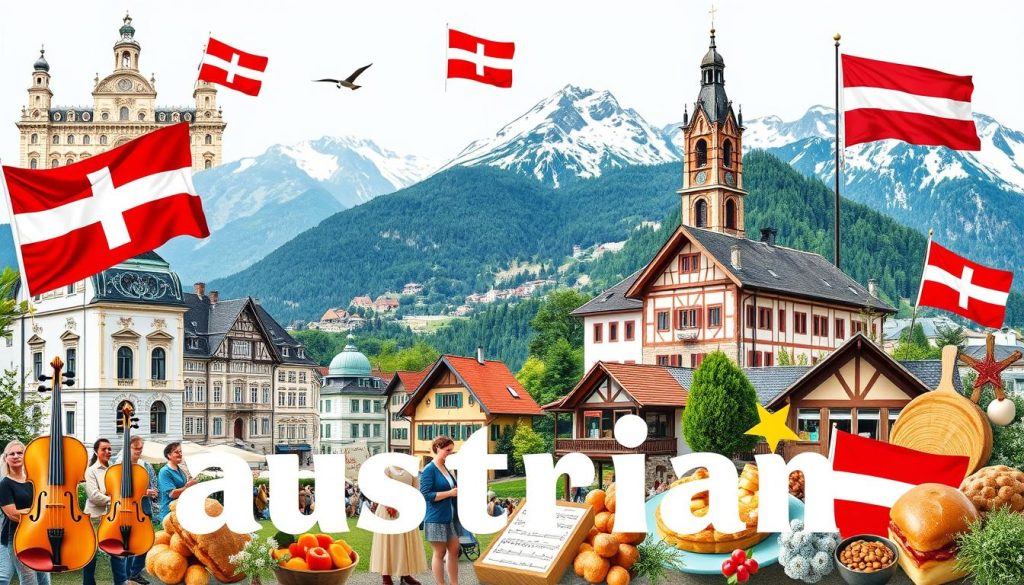
Austria has a rich mix of customs and traditions that are key to its culture. An overview shows a blend of history, regional differences, and community practices. Local festivals and food are big parts of Austrians’ connection to their heritage.
Language is very important, with German being the main one. Different dialects show the country’s varied regions. Art and music also play big roles, making social life lively. Famous composers and artists have made Austria a creative hub in Europe.
Austria’s culture is more than just traditions. It’s about values, beliefs, and how people interact. Getting to know these aspects helps understand Austrian identity. It connects people across generations and keeps traditions alive.
Historical Influences on Austrian Customs
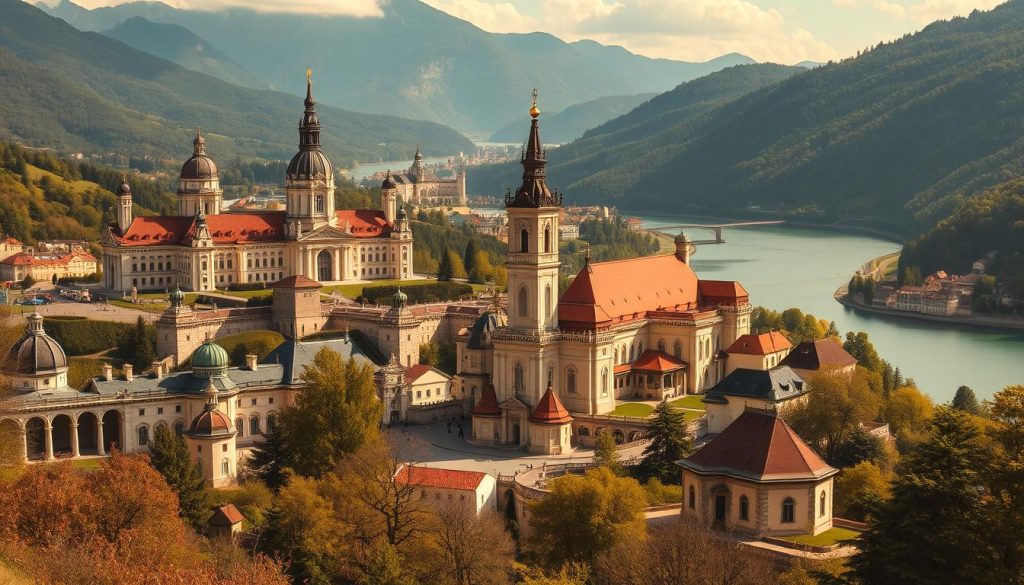
Austria’s customs have evolved over time, shaped by key historical events and geography. The Habsburg Empire played a major role in forming Austrian identity. It shows how governance, culture, and society are connected.
From the Habsburg Empire to Modern Austria
The Habsburg Empire ruled Central Europe for centuries, deeply influencing Austria. It mixed cultures from the 16th to the 20th century. This mix is still seen in today’s social and cultural practices.
The empire’s art and architecture add to Austria’s beauty. They also boost national pride, showing the value of heritage.
Impact of Geography on Traditions
Austria’s varied landscape shapes local traditions. Mountains, valleys, and rivers each influence customs differently. For example, Tyrol’s mountains are tied to farming and sports.
Areas near rivers celebrate water and trade. This diversity makes Austria’s culture rich and varied, showing the power of geography.
Austrian Festivals and Celebrations
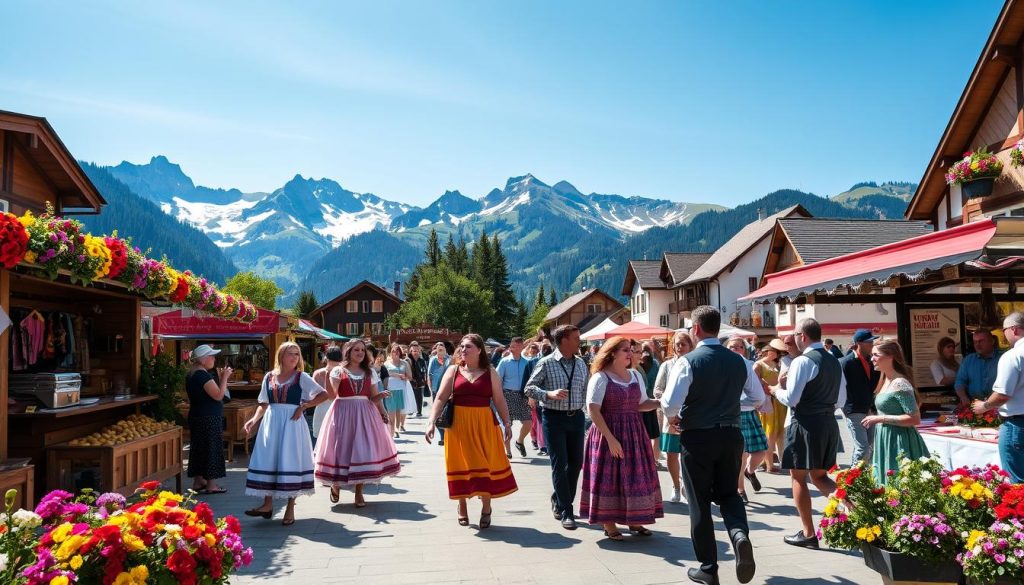
Austria is full of national holidays and regional festivals. These show off the country’s rich culture. Each event is filled with local traditions, giving us a peek into community values. These celebrations bring people together, showing Austria’s special identity.
Major National Holidays
National holidays in Austria are big moments for joy and thought. Key days include:
- New Year’s Day: It starts with fireworks and family time, setting the year’s mood.
- Easter: It’s filled with church services, Easter markets, and local customs that vary across Austria.
- National Day: On October 26, it honours Austria’s neutrality with public events and ceremonies.
These holidays unite people, showing off traditions mixed with today’s world.
Regional Festivals: A Diverse Experience
Regional festivals in Austria show off local traditions all year. Notable ones are:
- Almabtrieb: In autumn, it celebrates cattle coming back from the mountains. There are parades, flowers, and music.
- Fasching: It’s a carnival with masquerade balls, street shows, and fun. It’s a time of joy for everyone.
These events bring local culture to life. They encourage people to join in, building a sense of community. They help us appreciate Austria’s rich customs.
Austrian Cuisine: A Culinary Tradition
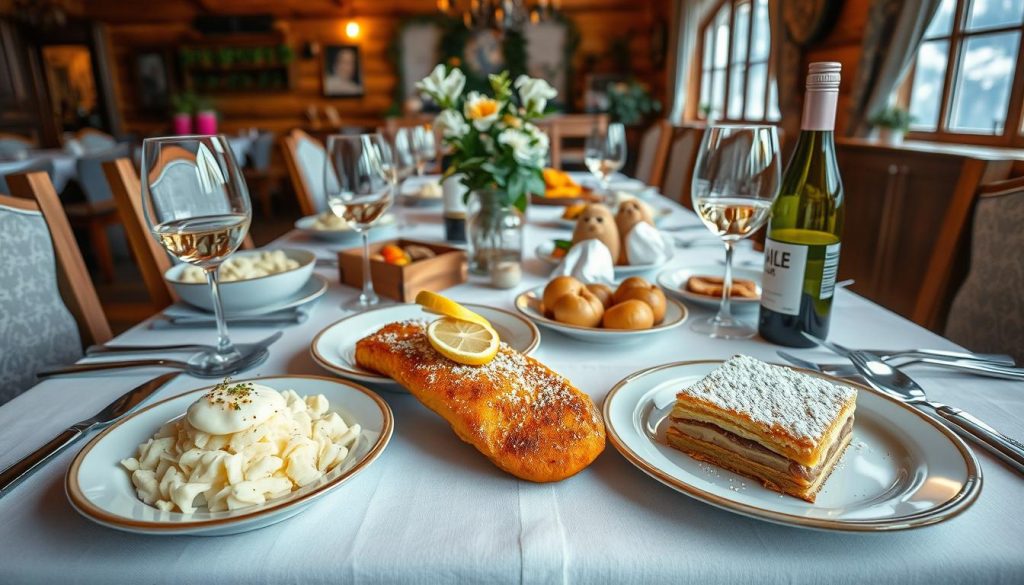
Austrian cuisine is rich and filled with iconic dishes. Wiener Schnitzel, Sachertorte, and Apfelstrudel are just a few examples. These dishes are not only tasty but also tell stories of Austrian food culture.
Each dish reflects the use of local ingredients and seasonal produce. This shows the importance of tradition in Austrian cooking.
Signature Dishes and Local Specialties
Wiener Schnitzel is a beloved dish in Austria. It’s a breaded veal cutlet served with lemon and potato salad. The Sachertorte, a chocolate cake, is also famous.
Apfelstrudel, with its apple filling, is another favourite. These dishes show Austrians’ love for local ingredients and their culinary pride.
Importance of Food in Social Interactions
In Austria, food is key in social gatherings. Meals bring people together, whether at home or during festivals. Sharing dishes strengthens community bonds.
Dining etiquette, like toasting, adds to the cultural value of meals. Austrian food culture believes that eating together nourishes both body and relationships. Every meal is a chance to celebrate and connect.
Traditional Dress in Austria
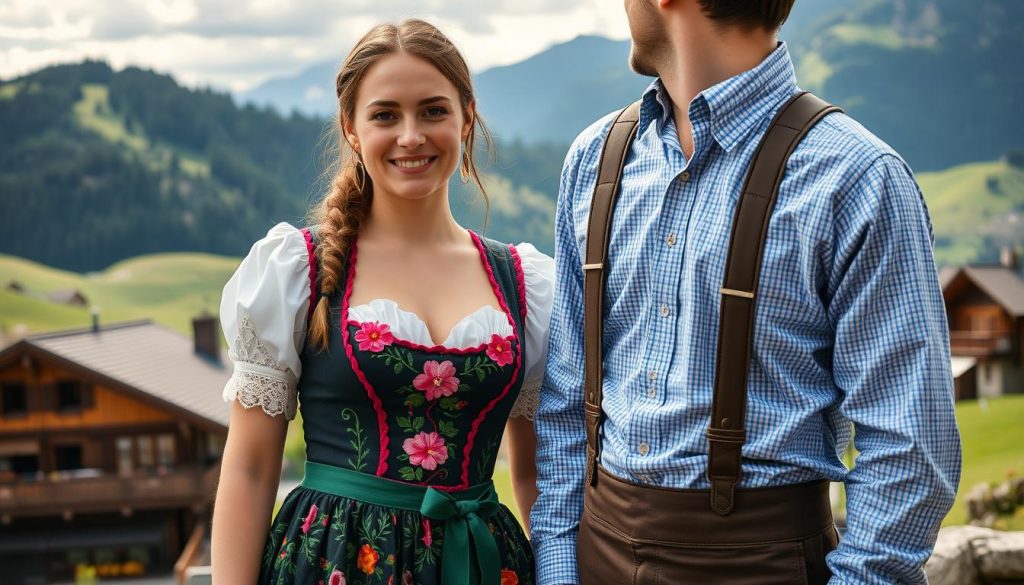
Austrians are very proud of their traditional clothes, especially the Tracht. It shows off the country’s rich history. The Tracht changes with each region and is worn at festivals and big celebrations. The Dirndl for women and Lederhosen for men are the most famous, showing off Austrian culture.
Dirndls have fitted bodices and full skirts. They are decorated with intricate embroidery and bright colours. Lederhosen, made of leather, show off skill and are practical. These clothes are not just for show; they also help people feel connected to their community.
Every region in Austria has its own Tracht style. For example, the Alpine areas use thick fabrics for the cold weather. Places near Hungary have special designs that show their history. These differences make the traditional dress even more special.
Wearing Tracht is more than just looking good. It helps people feel part of their community. At events like Oktoberfest, people wear their Tracht. This creates a feeling of togetherness and celebrates Austrian traditions.
Folk Music and Dance in Austrian Culture
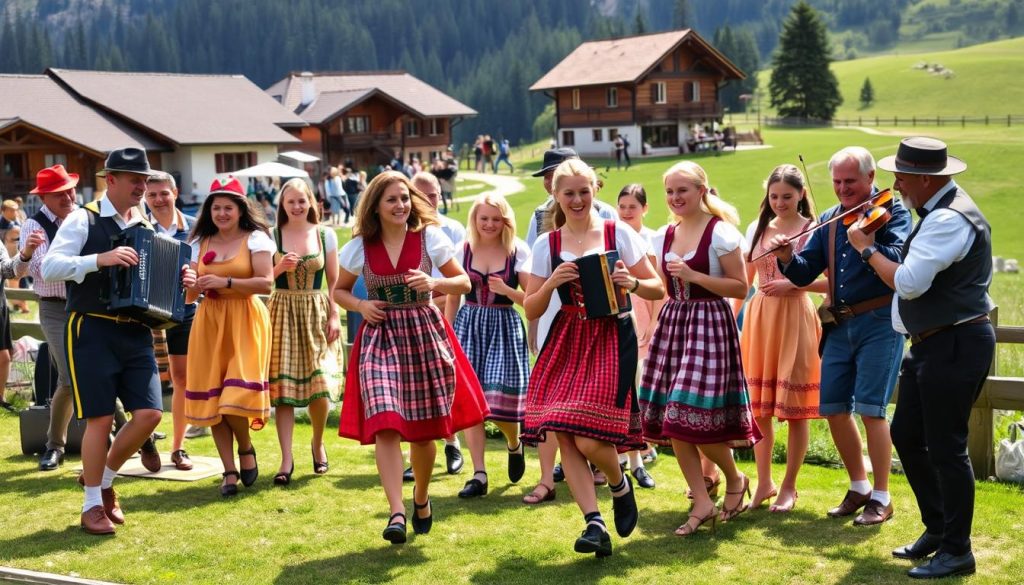
Folk music is key in Austrian culture, showing the rich traditions of different areas. Instruments like the zither and accordion add to the special sound of Austrian songs. These tunes are more than just music; they are deep cultural expressions that show the Austrian spirit and heritage.
Instrumental Influences and Folk Songs
Austrian folk songs tell stories of history and local tales. Each area has its own tunes and rhythms, with traditional instruments adding to their beauty. The zither’s sound is often seen as the heart of Austrian culture.
Accordion music brings energy to folk dances, sparking a love for dancing. These songs share tales of love, struggles, and joy, keeping Austrian identity alive through generations.
Popular Traditional Dances
Dances like the Schuhplattler and Waltz are big in Austrian celebrations. The Schuhplattler is full of energy and community spirit. It brings people together through lively steps and clapping.
The Waltz, known for its grace, is perfect for social events. It lets couples connect as they dance. These dances help people connect with their heritage and build community.
Austrian Art and Architecture
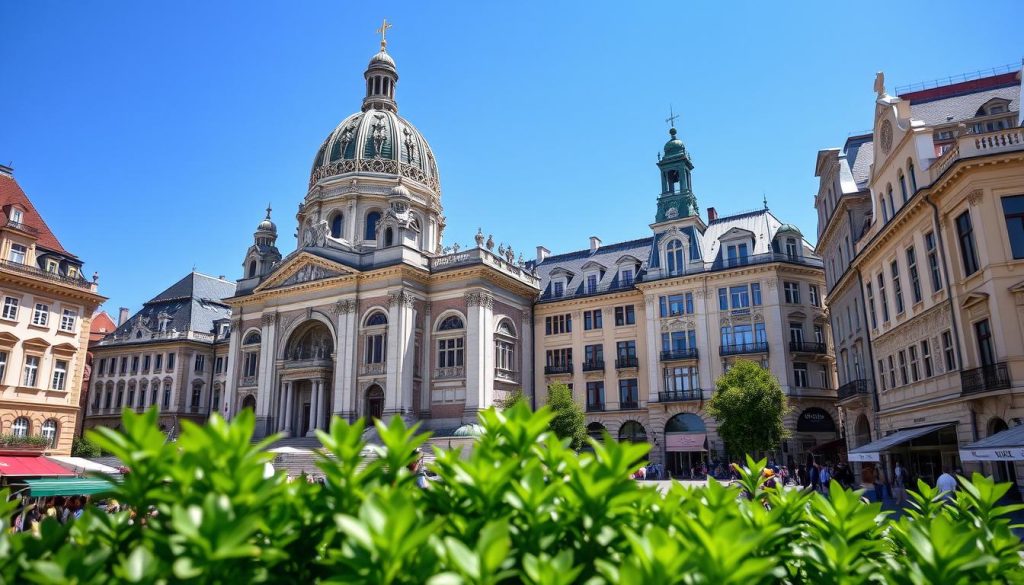
Austrian art and architecture are key parts of the country’s culture. Famous artists like Gustav Klimt and Egon Schiele have greatly influenced Austrian art. Their work has helped us understand the cultural values they represented.
Influential Artists and Movements
Austria has played a big role in European art. The Vienna Secession was a major change, embracing modernism and new ideas. Klimt’s unique style and Schiele’s emotional depth have left lasting impacts on Austrian art.
Landmarks Reflecting Cultural Heritage
Places like Schönbrunn Palace and St. Stephen’s Cathedral show Austria’s rich history. These sites are not just beautiful but also tell stories of the country’s past. They reflect Austria’s cultural heritage and continue to inspire today.
The Role of Religion in Austrian Customs
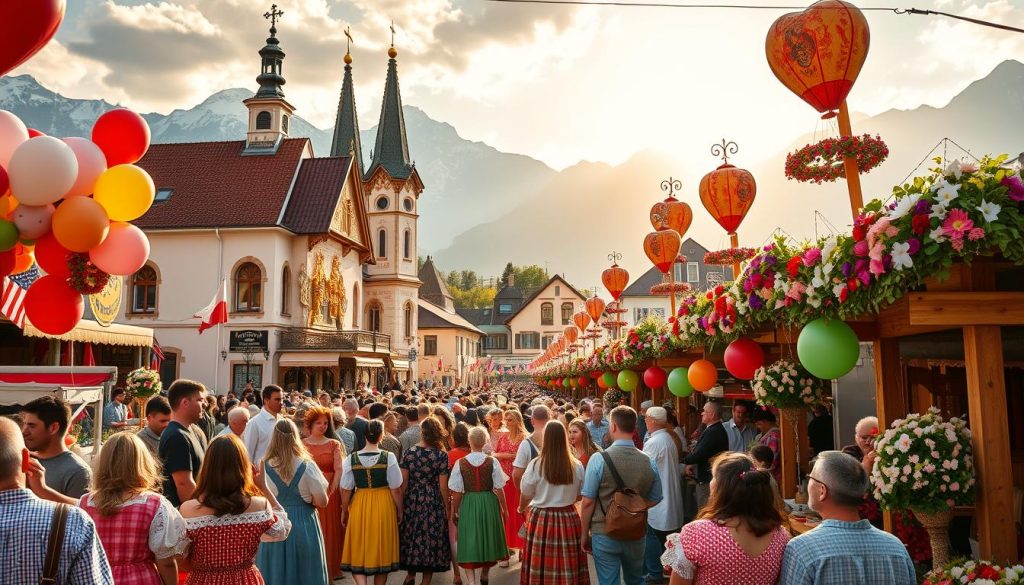
Religion is key in shaping Austria’s culture. Major religions deeply influence the country’s traditions and values. Roman Catholicism is the main faith, affecting family and community events.
These beliefs help create a sense of belonging in communities. They form the basis of many customs.
Major Religions and Their Influence
The majority of Austrians are Christian, mostly Roman Catholic. There are also Protestants, Orthodox Christians, and Muslims. These religions have shaped Austrian culture and customs.
They guide moral values and social norms in different areas. This shows the deep connection between faith and culture.
Religious Festivals and Traditions
Austria’s religious festivals are a colourful part of its culture. Events like Christmas and Easter bring out unique customs. For example:
- Advent wreaths and Christmas markets unite communities.
- Easter egg decorating symbolises rebirth.
- Processions show the community’s spirit during holy days.
These festivals reflect the spiritual beliefs of Austrians. They also strengthen community bonds. They remind people of their shared history and values.
Austrian Literature: A Legacy of Words
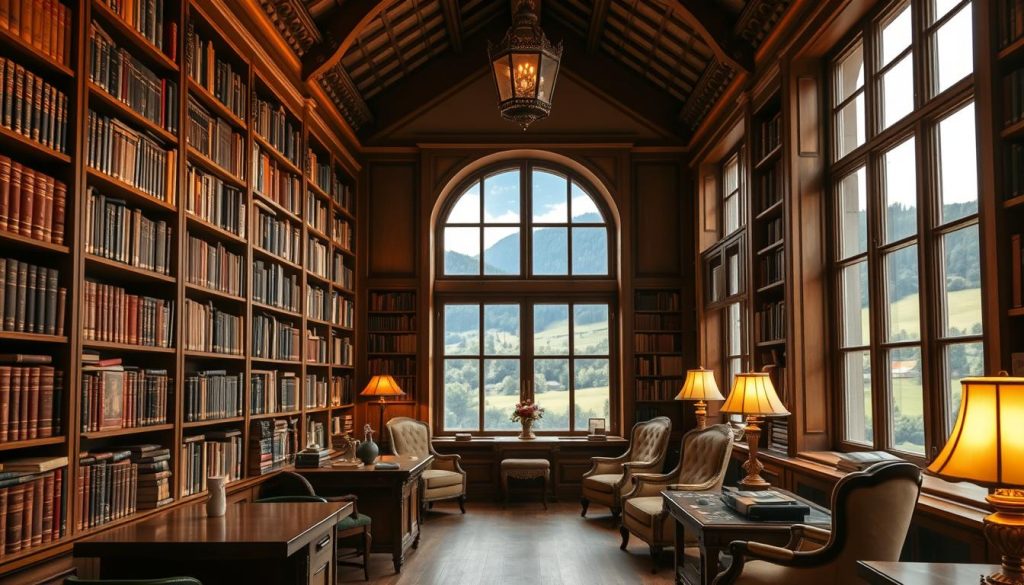
Austrian literature is a treasure trove of stories that reveal the country’s deep cultural roots. It offers deep insights into society and identity through the works of famous authors. These stories go beyond simple tales; they capture the essence of history and society, showing both personal and shared experiences.
Prominent Authors and Their Contributions
Two names stand out in Austrian literature: Franz Kafka and Stefan Zweig. Kafka explored themes of alienation and the search for meaning in life. His stories often show people fighting against forces they can’t understand.
Stefan Zweig, meanwhile, captured the spirit of Austrian society in the early 20th century. His stories mix history with personal tales, showing the turmoil of his time. Zweig’s work highlights the big challenges Europe faced, making his stories crucial to Austrian literature.
These authors have not only enriched Austrian literature but also given us a glimpse into their era’s culture and emotions. Their work continues to inspire new writers and keep alive the stories that shape Austrian identity.
Sports and Outdoor Activities in Austria
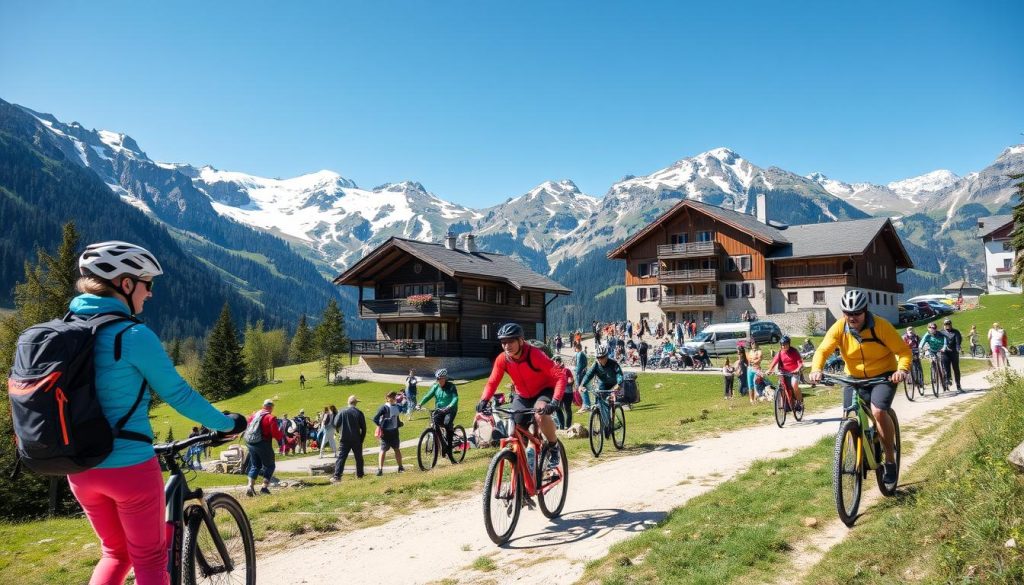
Austria has a lively sports culture, with outdoor activities at its heart. The beautiful landscapes, from the Alps to valleys, make life an adventure. Skiing is a big hit, attracting people from everywhere to its top resorts.
Hiking trails take you through mountains and forests, showing off Austria’s beauty. It’s great for staying fit and building friendships. Football is also loved, bringing people together in local clubs.
- Skiing: A winter staple reflecting regional heritage.
- Hiking: A summer favourite that showcases Austria’s breathtaking scenery.
- Football: A popular sport fostering teamwork and community spirit.
Austrian Culture: Traditions and Modernity
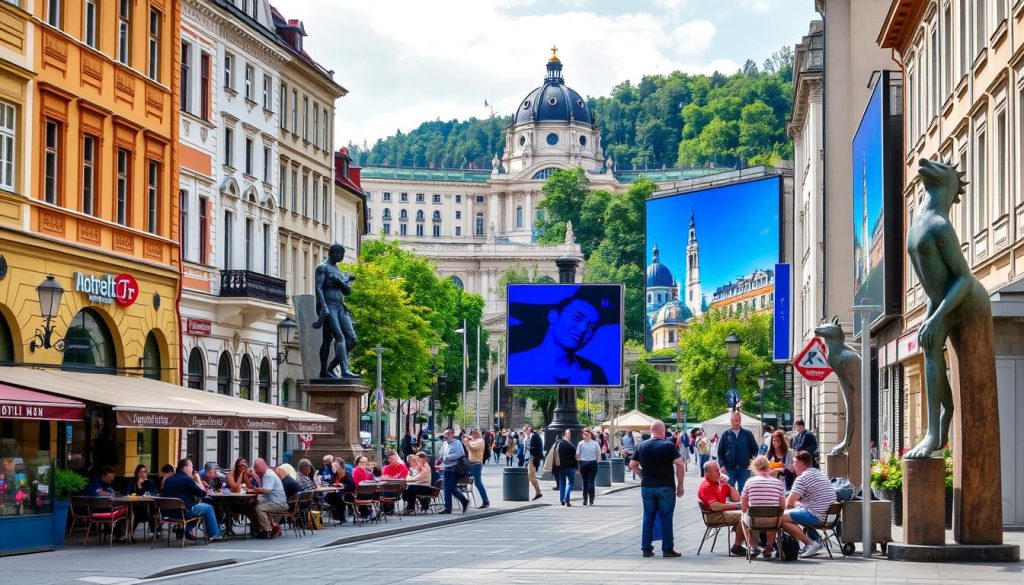
Austrian culture is a mix of old customs and new ideas. As times change, old ways get updated. This shows how culture keeps evolving and adapting to new things.
How Contemporary Influences Shape Traditions
Many things change Austrian customs. Some key factors are:
- Globalisation brings different cultures together, making traditions richer.
- Technology helps people learn about new ways of living and celebrating.
- Young people mix old values with new ideas, creating fresh ways to celebrate.
Austria’s culture is evolving, keeping traditions alive while welcoming new ideas. People still value their heritage but also enjoy modern changes.
Arts and Crafts: Preserving Traditional Skills
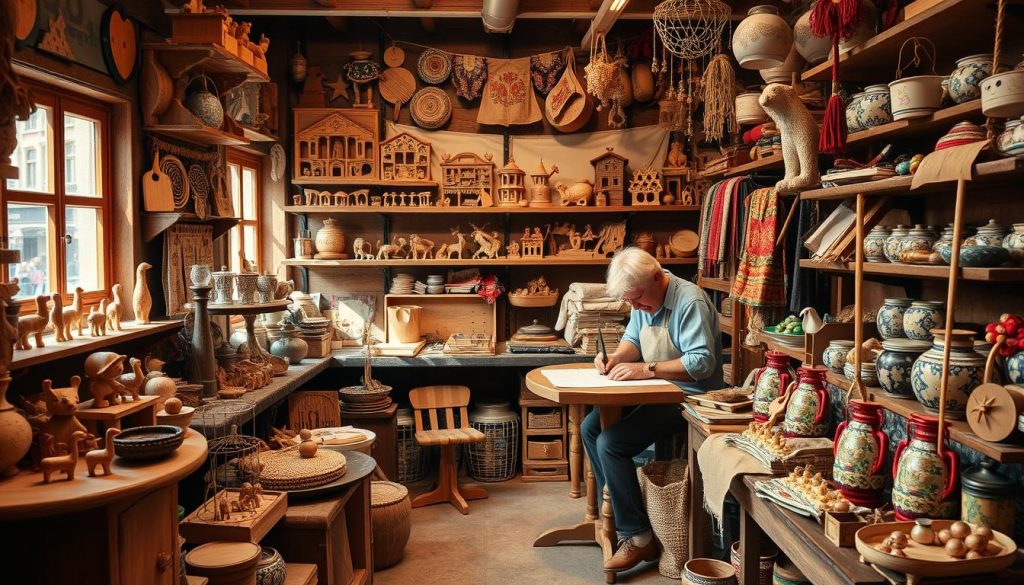
Traditional crafts in Austria are a treasure trove of cultural heritage. They show off skills passed down through generations. Each handcrafted item has a story, revealing the unique history and identity of the region.
Skills like woodworking, pottery, and embroidery are more than just techniques. They are a bridge to our cultural roots. They connect us to our past and our community.
Keeping these crafts alive is crucial in today’s fast-changing world. Organisations and artisans work hard to teach these skills to the next generation. They run workshops and community programs to share their knowledge.
Craft fairs and exhibitions are a big deal for these artisanal skills. They give local craftsmen a chance to show off their work. These events bring people together, celebrating the beauty of handmade items and supporting local businesses.
The growing interest in sustainable and ethical products has also helped traditional crafts. It shows how valuable and unique these items are. It invites people to see the worth in these handmade goods.
Traditional crafts in Austria do more than just preserve the past. They also inspire new ideas and creativity. They help the next generation find their place and understand their cultural heritage.
The Austrian Language and Dialects
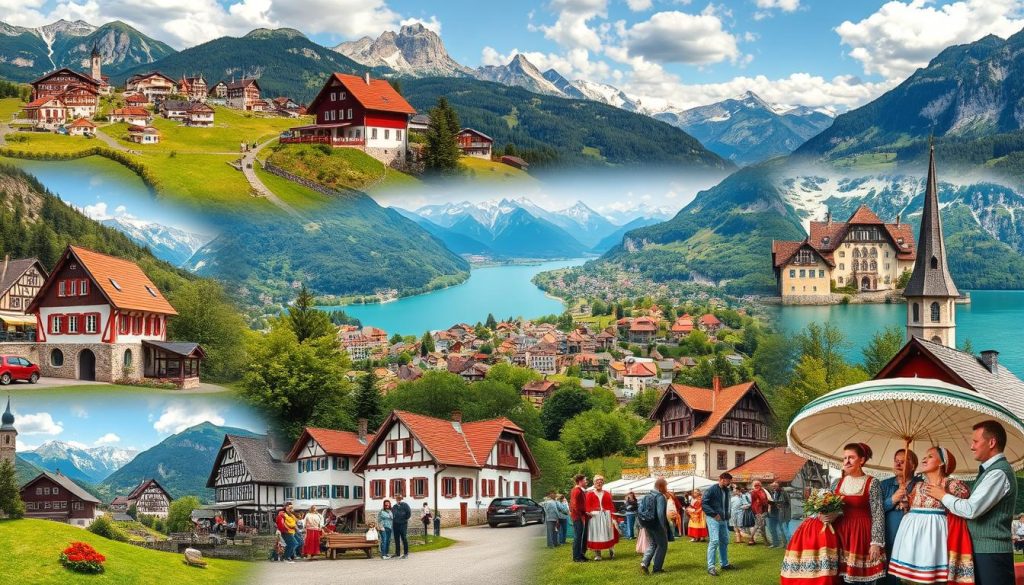
Austria’s language scene is full of dialects. Austrian German is the main language, more than just a way to talk. It shows where people come from. Different areas in Austria speak German in their own way, showing the country’s rich language mix.
Varieties of German Spoken in Austria
In Austria, many dialects exist, each with its own sounds and rules. These dialects carry local traditions and cultural details. They are key to the communities they belong to. Here are some key points about these dialects:
- Regional Variations: Every province has its own dialect, shaped by history and culture.
- Preservation of Tradition: Dialects help keep cultural heritage alive and connect people to their roots.
- Adaptation of Language: Even though Austrian German is the standard, people often use dialects in everyday talk. This makes conversations richer.
This variety in language makes daily life more interesting. It also adds a lot to Austria’s culture. The dialects tell the stories of Austria’s past, helping shape today’s conversations.
Young People and Austrian Traditions
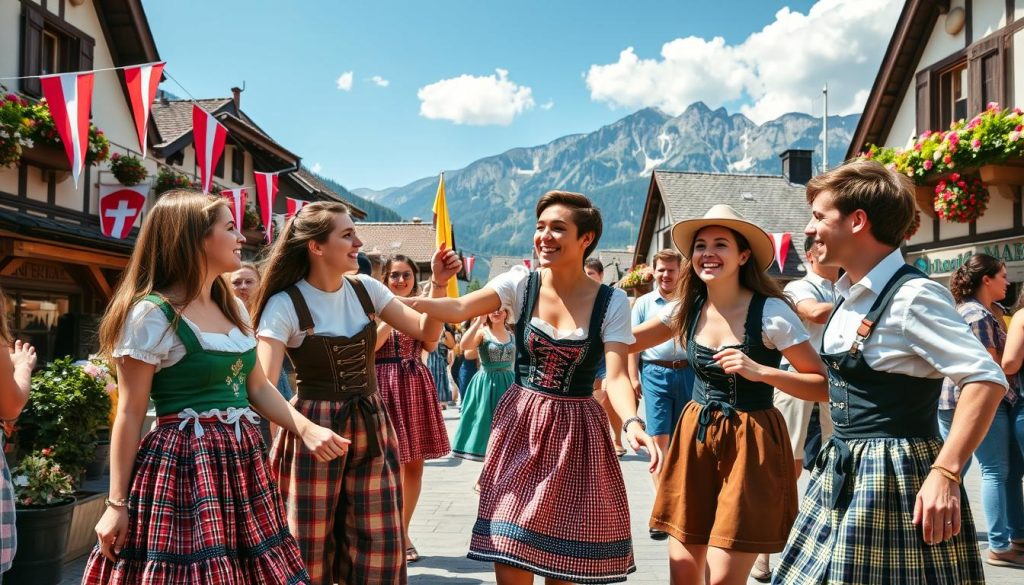
In Austria, young people are shaped by global trends. They balance keeping their cultural heritage alive with embracing new ideas. Thanks to technology and social media, they mix old traditions with today’s lifestyle.
Influence of Global Culture
Young Austrians are deeply influenced by global trends. They don’t just follow international styles; they also make them their own. This mix can lead to a loss of identity, but it also brings fresh, exciting ways to express culture.
By exploring different cultures, young Austrians create a unique identity. This identity shows their connection to the past and their openness to the future.
Efforts to Preserve Traditions
Despite global influences, many young Austrians work to keep traditions alive. They play a key role in preserving Austrian heritage. By joining cultural events and learning programmes, they connect with their heritage.
These activities help young people feel proud and responsible. They ensure important traditions are kept alive for future generations.
Environmental Awareness in Austrian Customs
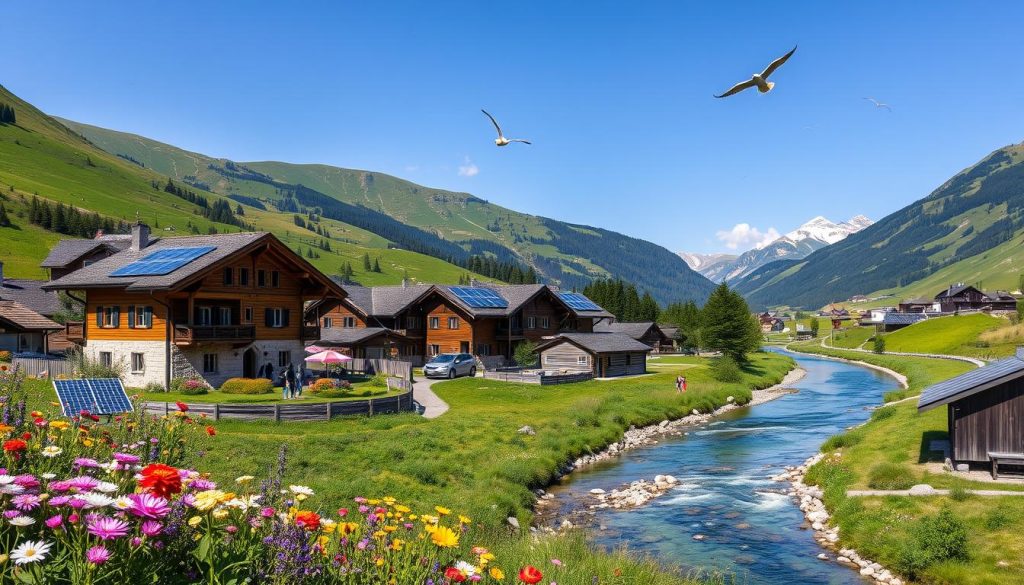
Austria has moved towards greater environmental awareness. It has woven this into its cultural practices. Now, old customs are changing to include eco-friendly actions, keeping their heritage alive.
This change helps people live in harmony with nature. It shows that we can live modern lives without harming the environment.
In Austria, many festivals celebrate local food and farming. These events help people connect with their heritage and care for the planet. You can find markets with organic foods, handmade items, and traditional dishes, all made with care for the environment.
- Practices rooted in local knowledge contribute to nutrient-rich soils.
- Eco-conscious initiatives support biodiversity in rural areas.
- Restoration of historical landscapes enhances ecological resilience.
Austrian culture now includes teaching kids about the environment. Schools and groups work on projects that show why we need to care for our planet. This way, Austria wants to create a culture that values both tradition and the planet’s health.
Conclusion: The Enduring Essence of Austrian Culture
Austrian culture is a mix of traditions, customs, and values that have grown over time. Folk music and traditional food are key parts of this culture. They help show what makes Austria special.
Regional festivals and art also play a big role. They keep Austrian heritage alive, even with new trends.
Keeping cultural identity strong is crucial in today’s world. Austrians stay connected to their roots. They make sure old values are still important today.
By loving their history and arts, Austrians celebrate their traditions. This keeps their culture alive and vibrant.
In short, Austrian culture is strong and flexible. It values its customs but also changes with the times. This spirit keeps Austria’s heritage alive and exciting for the future.

